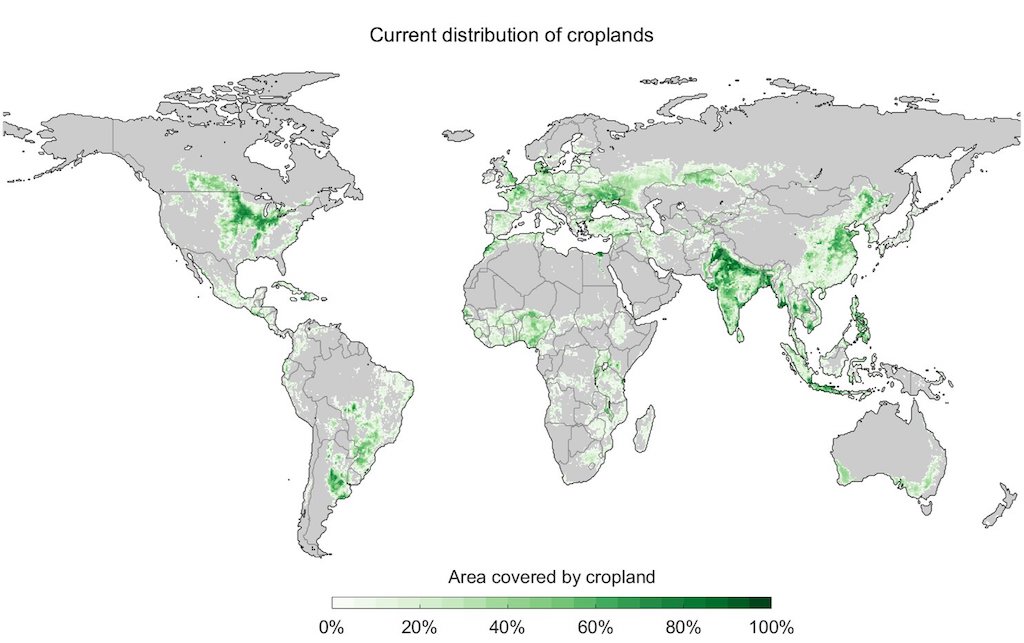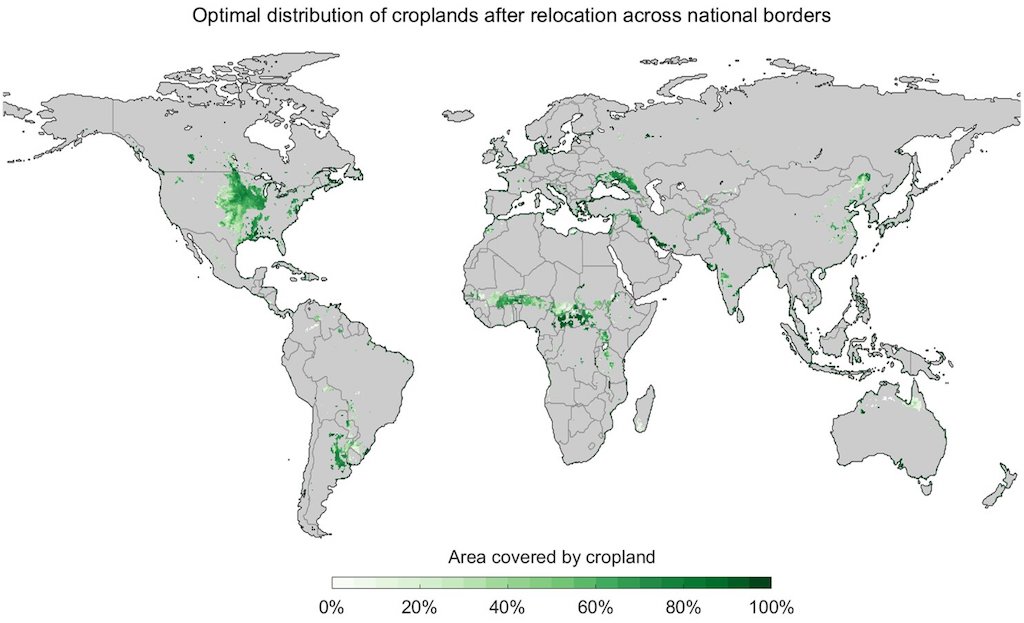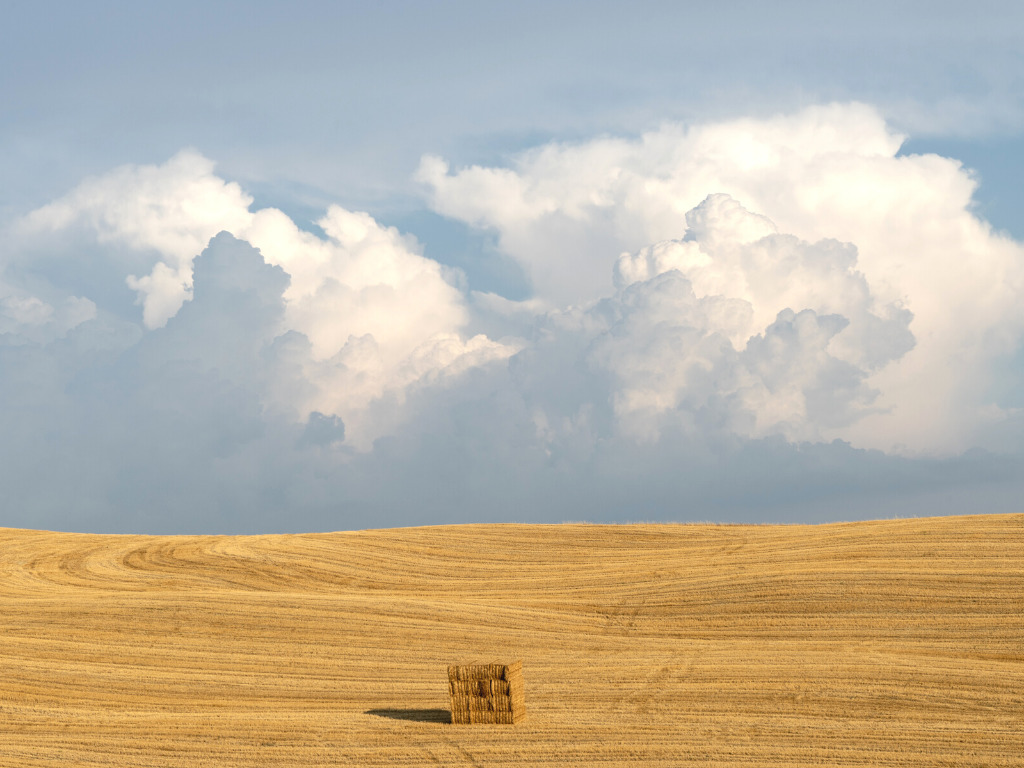4 Mins Read
New research suggests relocating farmland could increase carbon sequestration and biodiversity while reducing freshwater use and minimizing environmental impact.
Have we been farming in the wrong places? A new study, published in the journal Nature Communications Earth & Environment, suggests that may be the case.
The researchers say that while a global shift to a plant-based diet has the most significant environmental benefits, it’s not happening quickly enough to mitigate climate change. But a new farming model, based on current dietary habits, could play a significant role in decreasing emissions and boosting biodiversity. That’s because many of the world’s current croplands carry large environmental footprints—a stark contrast to the carbon-rich and biodiverse land they replaced. Many current farming models are also burdening freshwater resources.
The researchers looked at current growing areas for 25 major crops including wheat, soy, and barley—all of which account for more than 75 percent of current farmland use. Using a mathematical model, the researchers determined whether or not this was the best possible distribution for the crops.
The model’s redistribution included farming operations that are fully mechanized productions with high-yielding crop varieties and heavy chemical use, to traditional subsistence-based organic farming.
Regenerating
“In many places, cropland has replaced natural habitat that contained a lot of carbon and biodiversity—and crops don’t even grow very well there. If we let these places regenerate, and moved production to better-suited areas, we would see environmental benefits very quickly,” said Dr. Robert Beyer, study co-author, formerly a researcher in the University of Cambridge’s Department of Zoology, now based at the Potsdam Institute for Climate Impact Research in Germany.

The new model looks at key growing regions including the midwestern U.S. area known as the corn belt, as well as sub-Saharan farmland in Africa, and repositioned crops to areas where yield would be maximized and freshwater use would decrease to nearly zero.
The researchers say under the new model, global biodiversity would be reduced by 87 percent, decreasing the extinction risk for a number of endangered and threatened species where agriculture drives habitat loss. The researchers further posit that the cropland location reassignment would revert quickly to natural states and recover their original carbon stocks and biodiversity “within a few decades.”
With the re-design model suggested, high-input, mechanized farming would cut the CO2 impact of croplands by 71 percent as the areas revert to natural forest land. The researchers say this is the equivalent of capturing 20 years worth of current CO2 emissions.
Freshwater
One of the most promising benefits to redistributed farmland was the significant decrease in the need for irrigation. Under the proposed model, it would disappear in nearly every scenario, relying instead on rainfall. Currently, agriculture consumes 70 percent of freshwater and is a leading cause of drinking water shortages around the globe.
The researchers say that while global cropland restructuring isn’t likely feasible, making shifts within borders would still offer benefits. They suggest it could reduce the carbon impact by 59 percent and biodiversity impact would drop 77 percent. The researchers also constructed a third model they call more realistic, where only the “worst-offending” 25 percent of cropland restructuring could offer at least half of the benefits of moving all croplands.

“It’s currently not realistic to implement this whole redesign. But even if we only relocated a fraction of the world’s cropland, focusing on the places that are least efficient for growing crops, the environmental benefits would be tremendous,” said Beyer.
The restructuring model also includes financial incentives for farmers to rewild part of their land to boost the environment and even move locations or crops better suited to the environment. The research notes that redistributing less intensive farming practices such as traditional and organic farming methods to optimal locations would have significant benefits.
“Optimal cropping locations are no moving target,” said Professor Andrea Manica at the University of Cambridge, senior author of the paper. “Areas where environmental footprints would be low, and crop yields high, for the current climate will largely remain optimal in the future.”
Photo by VELOBAR+ on Unsplash.




